If visual content is critical to helping brands create lasting impressions, then how are organizations sourcing and producing these creative assets?
Depending on the resources available, some may rely solely on stock sites, while others may opt to hire internal staff or freelancers. For many, it’s a combination.
To get to the bottom of these questions (and many more), check out our new report in partnership with Contently, the 2019 Report: Engaging Your Audience with Visual Content.
When it comes to sourcing and creating content, here’s a look at a few questions we asked and how marketers responded.
What is your organization’s method for sourcing photography or videography?
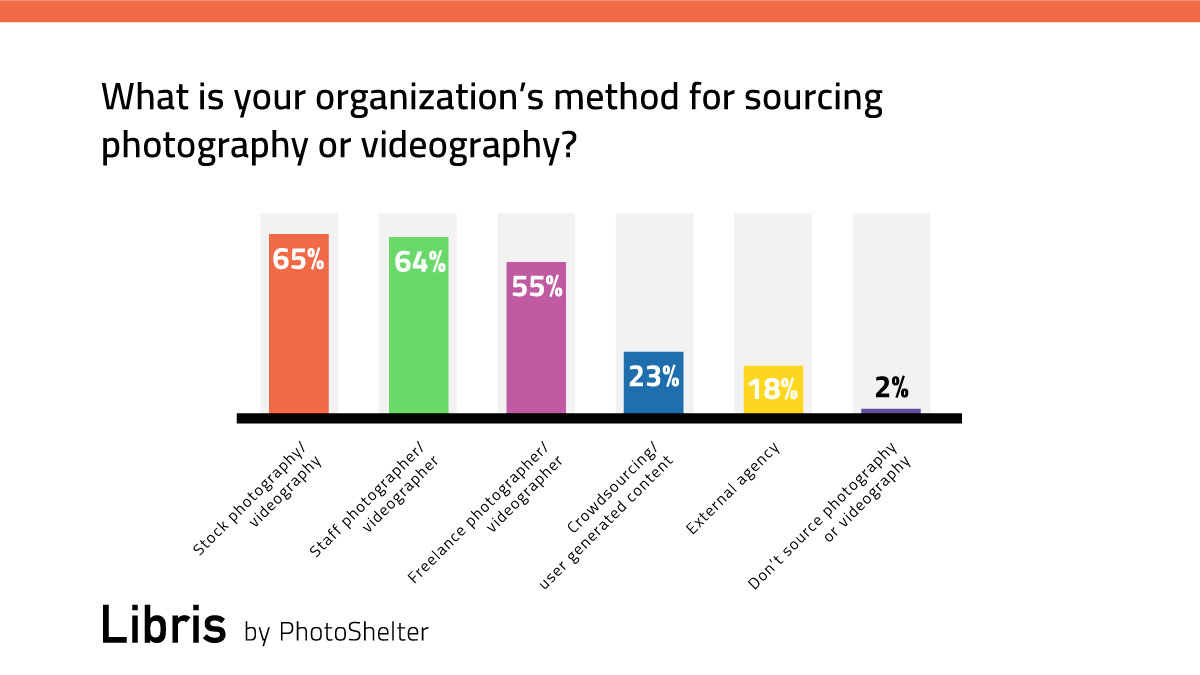
Here, we see that compared to 2018, there is a 13% spike in organizations who are turning to staff photographers and videographers to source content. This suggests that as the need for visual content rises, companies are investing more resources into full-time staff to get the job done.
Full-time staff members who create photos and videos for your brand have a unique advantage. Because they are immersed in your company and culture, they can tell stories from your brand’s point of view. They have behind-the-scenes access to pull back the curtain while always keeping your brand’s best interest at heart.
Marketers know that the need for photos and videos can change rapidly over time.
Compared to last year, has your need for photography increased, decreased or stayed the same?
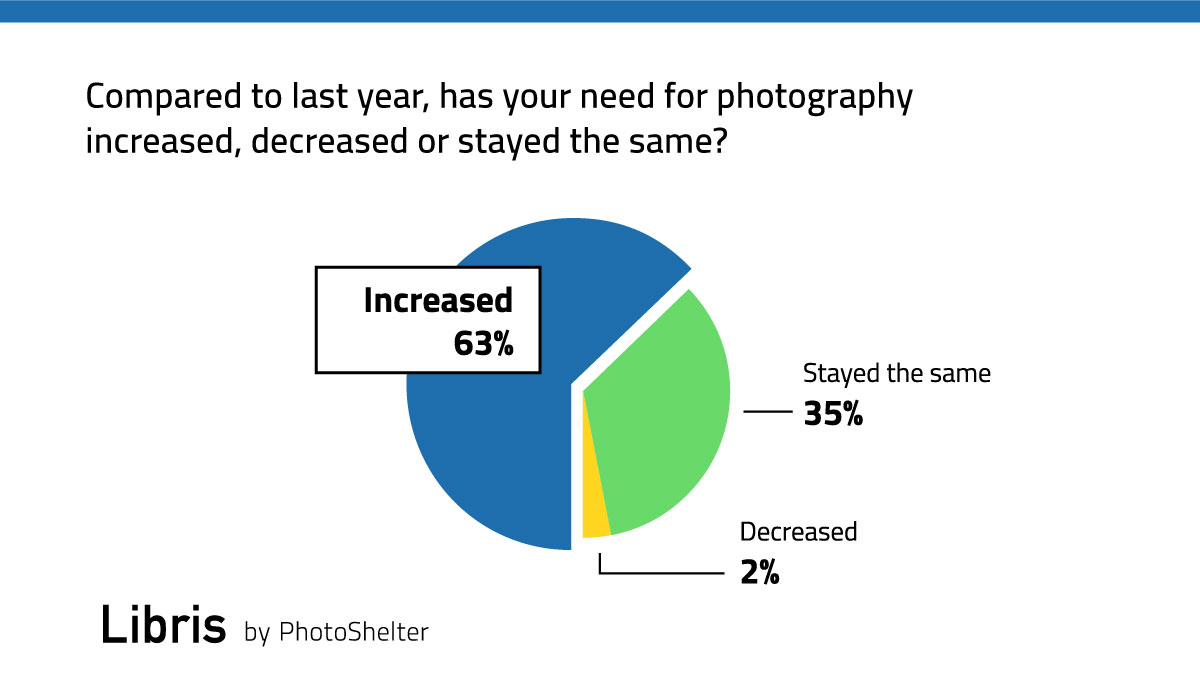
Of those who say their need for photography is increasing, 71% also share visuals to engage their audiences once a day or multiple times a day.
Compared to last year, has your need for videography increased, decreased or stayed the same?
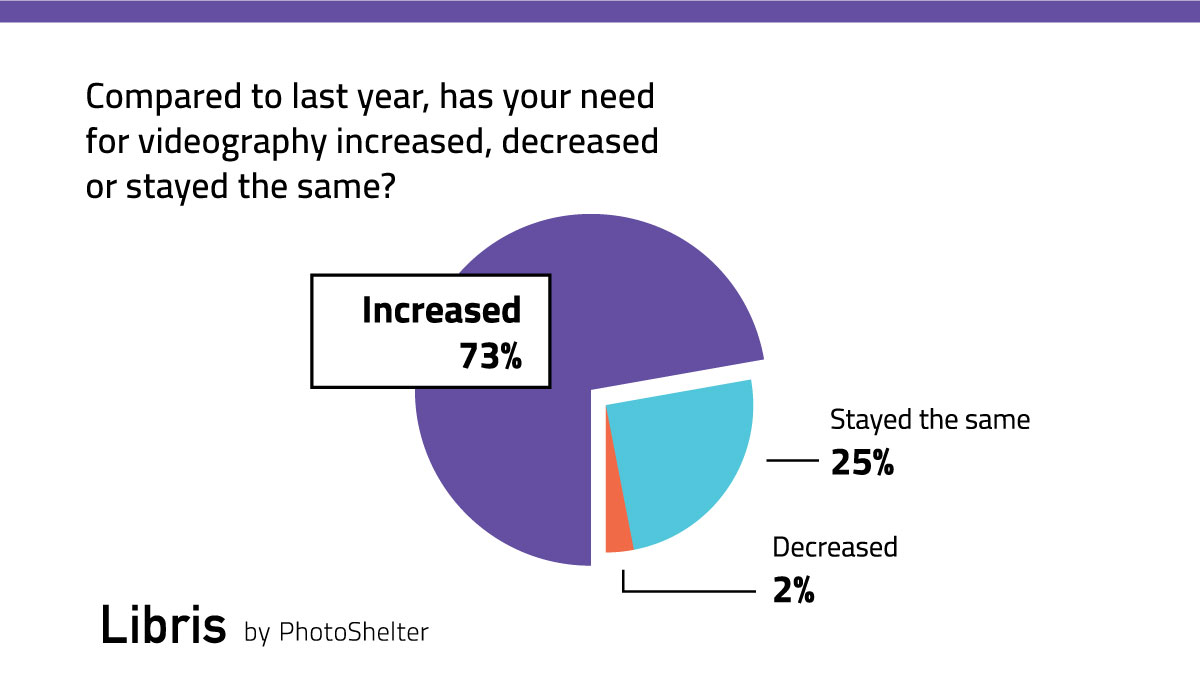
Of those who say their need for video is increasing, 82% are using visual content primarily for social media. Compared to last year, we also see an uptick in demand for video overall. This upward trend suggests marketers are turning to video content more to engage their audiences and stand out in a crowded marketplace.
Given that visual content needs are up, we wanted to gauge whether increased demands have impacted quality all.
How would you rate your company’s video content?
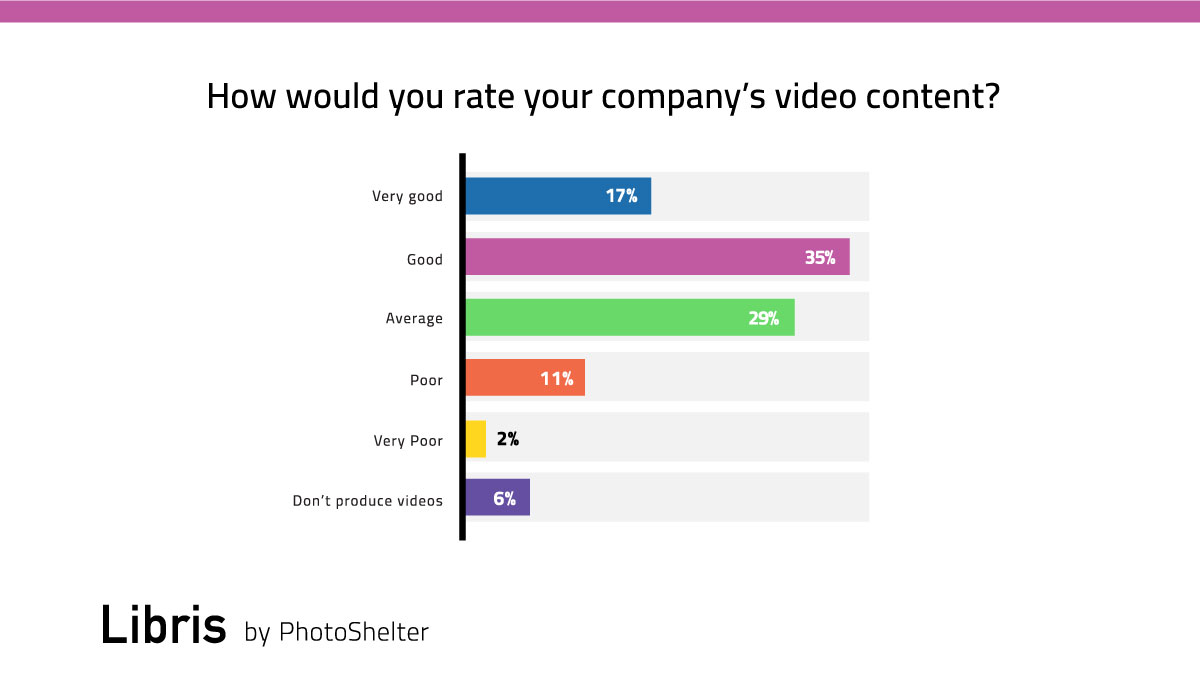
Of those who rate their company’s video content “very good“ or “good,“ 72% turn to staff videographers and photographers to source content, suggesting that in-house talent produces higher quality content – and higher confidence in that content. 63% of this segment also intend to produce more short form video this year which is more than any other format.
With the need for video on the rise, we also wanted a sense of the sheer quantity of videos brands are producing.
How many videos did your team produce last year?
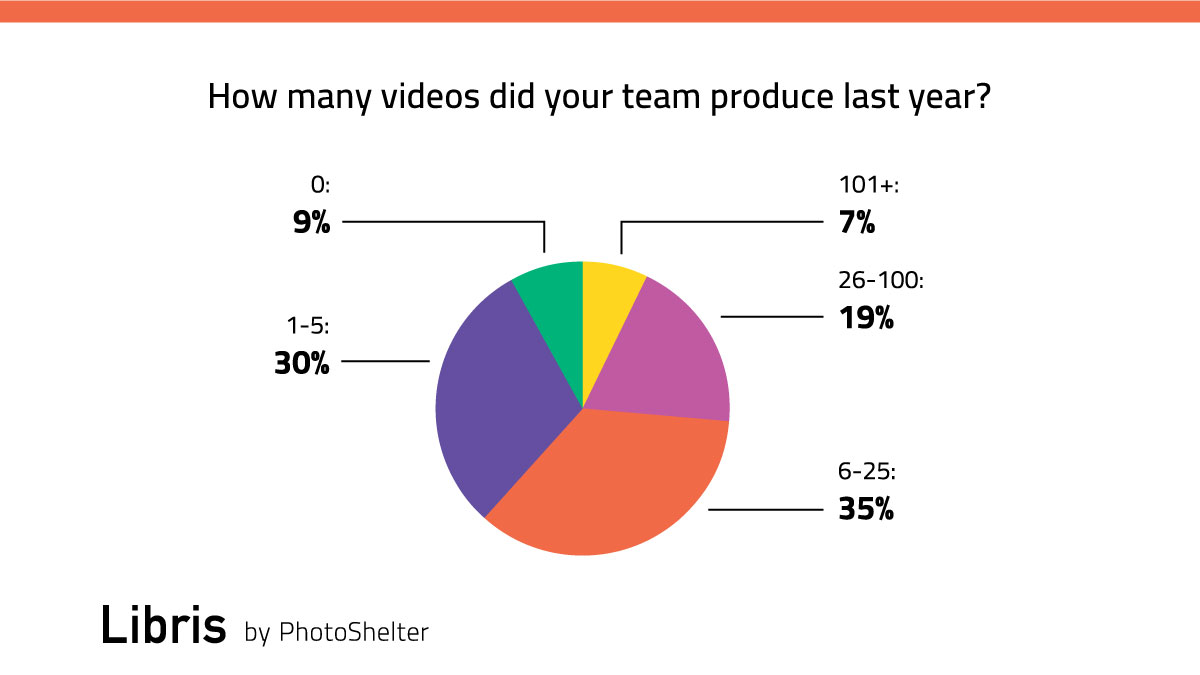
Of those who produced over 100 videos last year, a large majority also use a cloud-based digital asset management system to organize and manage their company’s visual content.
On average, how long does it take to create, approve and publish a single visual asset?
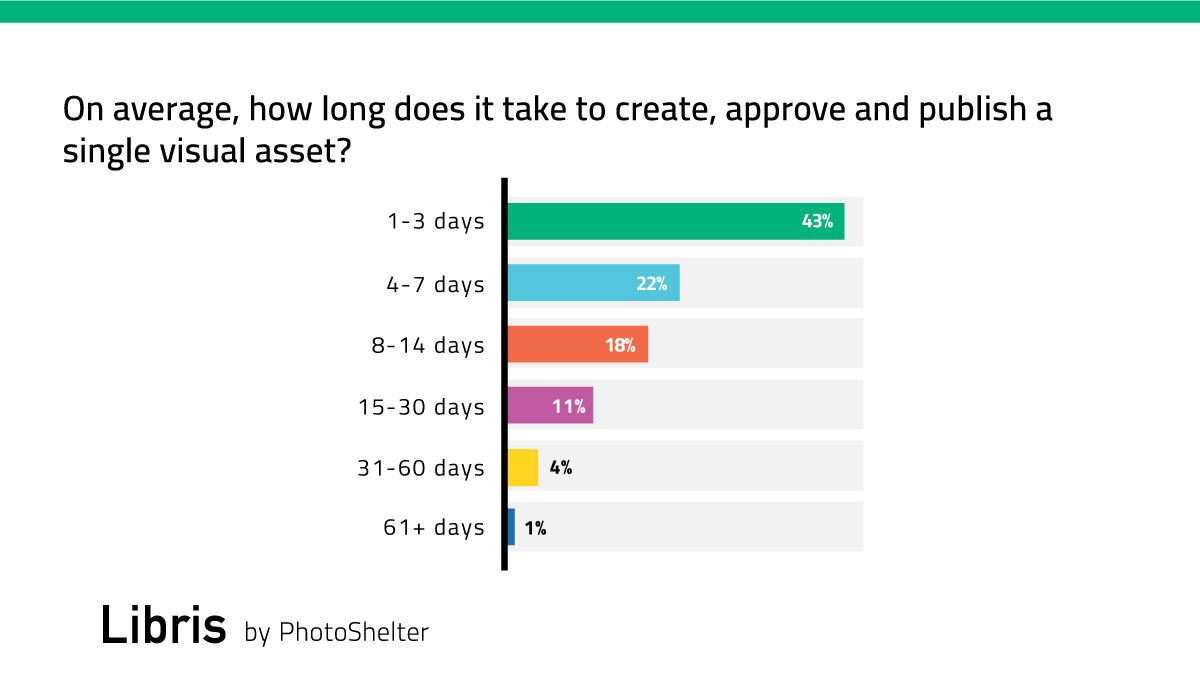
If more brands are relying on in-house resources to produce and share visuals, we were curious to learn more about timelines and the creative process. Here we learn that almost two thirds of participants can create and publish assets within a single week.
What type of visual content is hardest to produce?
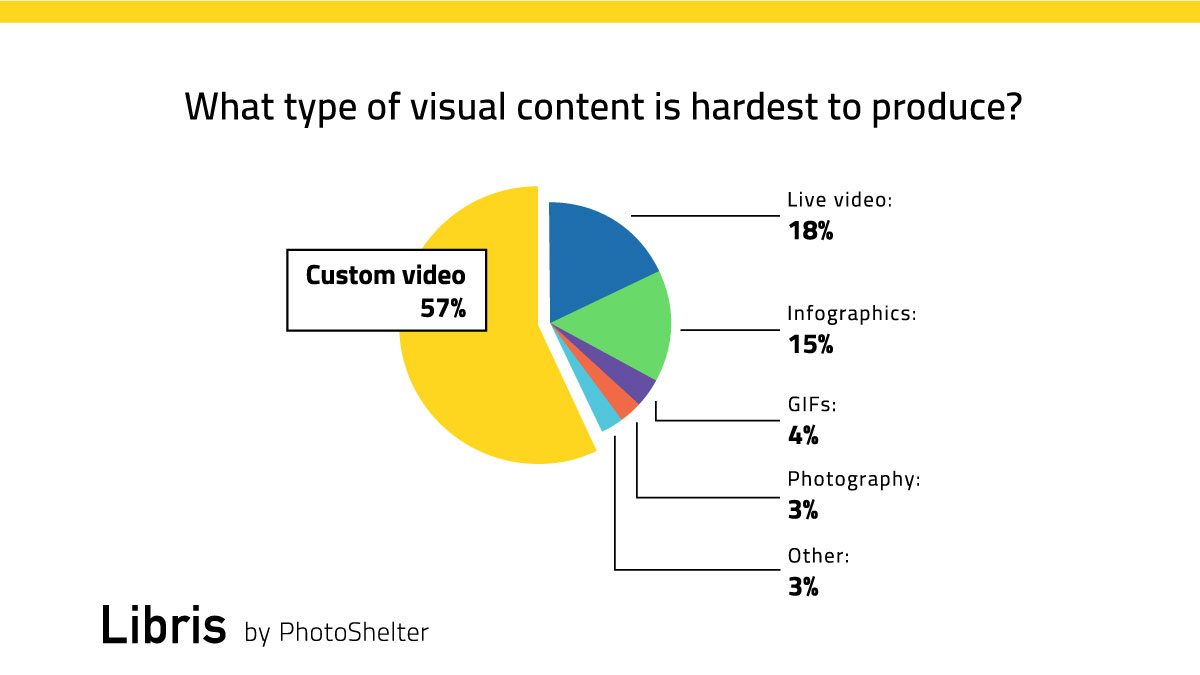
Compared to last year, we see a 10% drop among those who say custom video is the hardest visual content to produce. Given the 13% increase in the number of brands sourcing content from staff photographers and videographers, this change may suggest that bringing talent in-house helps streamline the production of visual content, including custom video.
How many visual assets does your company create per month?
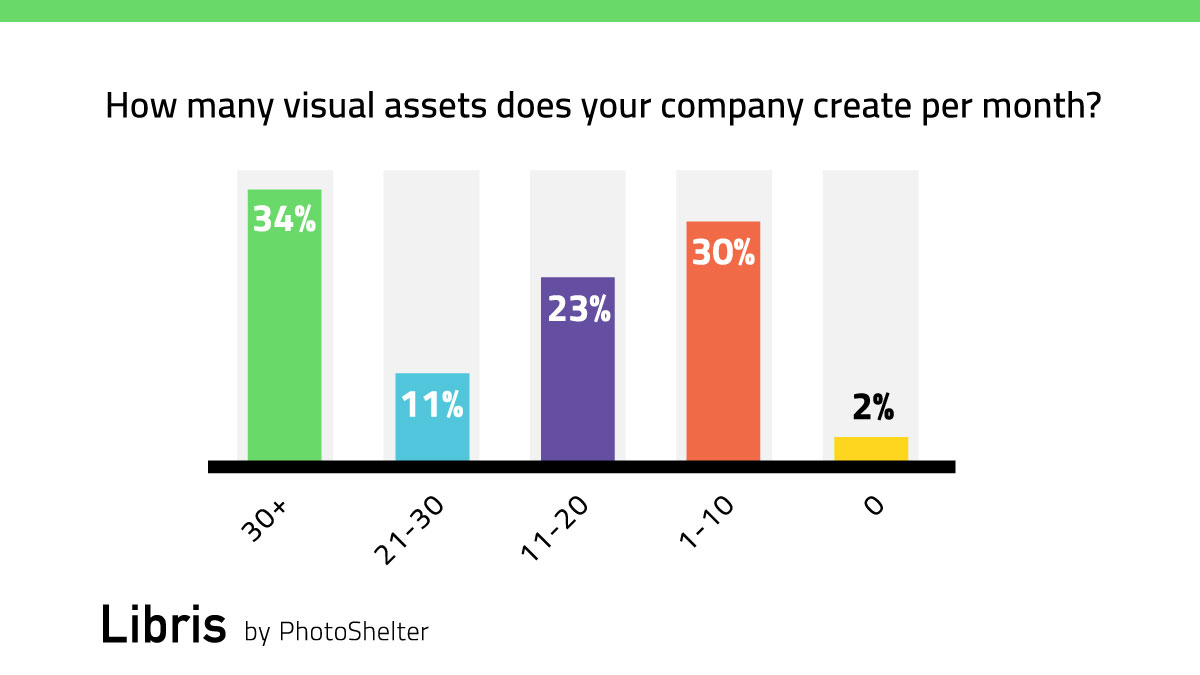
To learn more about how marketers are navigating growing demands for visual storytelling today, check out the 2019 Report: Engaging Your Audience with Visual Content.


